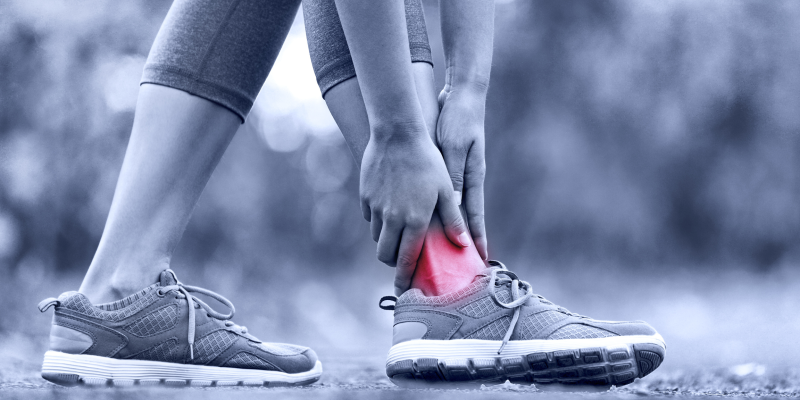Running injuries are very common. Injury prevention could be helpful, especially if you are training for longer distances like a half or full marathon. There is no one reason why runners get injured, but there are many ways to help them prevent injury. We have highlighted a few tips to follow to prevents running injuries.
1- Build Mileage Gradually
Probably the number one cause of running injuries is when runners do too much, too soon, too fast. The body needs time to adapt to training changes and jumps in mileage or intensity. Build your weekly training mileage by no more than 5 to 10 percent per week. For example, if you follow the 5 percent rule and run 10 miles the first week, do just 10.5 miles the second week, and so on.
If you are recovering from an injury or are brand new to running, it is best to stay close to the 5 percent limit or you’ll run the risk of injury or re-injury. More experienced runners who have no history of injuries can safely train closer to the 10 percent limit.
2- Overuse Injuries and Ground Reaction Forces
Most running injuries seen by sports medicine physicians are so-called “overuse injuries.” These injuries are due to chronic stress on a particularly soft and hard tissue in the body (muscle, ligaments, ligaments, tendon, bone) and not necessarily one acute event.
Overuse injuries in runners are most commonly caused by sudden changes in running mileage and intensity. An important preventive measure is to reduce the intensity and understanding of Ground Reaction Forces as we highlighted.
What is Ground reaction forces (GRF) ? in running means (force from the ground upwards as your foot hits the ground) Newton’s 3rd law.
They have measured the GRF in runners and they reported in studies to be between 2.5 and 3 times body weight.
To calculate your GRF you could use this example: E.g. 80kg runner who averages 500-foot contacts per mile
80kg x 2.5 = 200kg. 200kg x 500steps = 100,000kg of load per mile! That’s a lot !!!
However, we have highlighted one of the best ways to increase tissue capacity in runners is to incorporate strength training into your weekly training. Strength training leads to greater tissue load capacity which allows you to incrementally increase training volume with reduced risk of injury in regard to GRF.
3- Strength Training
Several studies have recommended strength training for runners as a part of your weekly running program to improve running economy. You may need to get some help from your strength and conditioning coach or your qualified therapist regarding your training program. They highlighted, strength training program including low to high-intensity resistance exercises and plyometric exercises performed 2-3 times per week for 8-12 weeks is an appropriate strategy to improve running economy in long-distance runners. (Read more).
In another research paper, running economy is improved by performing combined endurance training with either heavy or explosive strength training. They Also highlighted strength training can improve lactate threshold and maximal speed in runners. (Read more).
FOLLOW US ON YOUTUBE AND GET ACCESS TO OUR WEEKLY FREE REHABILITATION EXERCISES.
4- Recovery time
Many runners put a great deal of thought into maximizing their training but relatively many runners fail to plan their recovery in the same detail. Training is often planned in the short term, mid-term (over the next 3 to 4 weeks) and longer-term (the competitive season or year as a whole). You may approach recovery in a similar way.
- Short-term recovery – consider recovery strategies for each session such as cooldowns, pre, and post-run fuelling and modifying sleep.
- Midterm recovery – plan training and recovery over a 3 to 4 week period and beyond to ensure that training increases gradually and recovery is modified to suit this change. In essence, if you train more, recover more! This might include a planned ‘recovery week’ every fourth week where training load is reduced.
- Long-term recovery – Planning training across a whole year to prepare for key competitions can help optimize performance and reduce fatigue.
Our Approach
Dublin Sports Injury Clinic is a physical therapy clinic based in Fitzwilliam Square, Dublin2. We have a holistic approach to our assessment and treatment. The initial assessment helps us to explore the cause of your injury and help you to get pain free shortly and stop any further injuries. We will design a customized training program for you to start with, and we will coach you and monitor your progress closely. We will prescribe relative rest or modified activities as required. Depending on the individual requirement, we apply manual therapy accompanied by stretching to restore tissue elasticity and reduce the strain in the muscle-tendon unit with joint motion.
Next step
Want to get in touch with our team of a therapist or you are looking for some advice? Simply fill in your details below & we get in touch with you shortly.
Disclaimer: This article is for information only and should not be used for the diagnosis or treatment of medical conditions. You can contact us if you would like to book an appointment or get some advice from our therapist.



2 Responses
Great information, I have done some of the mistake (building milage quickly) in the past. Thanks a lot.
Agreed on Strength work, I’ve never was a fan of going to gym !! I still find them difficult to do them.